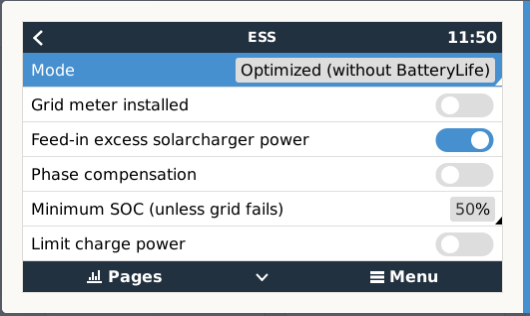Hi! I have a question regarding the functioning of the parameter 'Active SoC limit' that can be found in the ESS. While in mode 'Optimized (with BatteryLife)' I started playing with the different parameters to test the installation, and in particular with the parameter 'Minimum SoC (unless grid fails)'. At first, both 'Minimum SoC (unless grid fails)' and 'Active SoC limit' had the same value, but after increasing the value of 'Minimum SoC (unless grid fails)' up to 100 %, the 'Active SoC limit' became stuck at 80 %.
I would like to know what does this parameter 'Active SoC limit' really mean and what's the functioning behind, so I can have a better understanding of it once I change the value of 'Minimum SoC (unless grid fails)'. I have already read the ESS Manual but it is not very clear to me yet.
I would like to add that my installation works mainly disconnected from the grid except in a few occasions that it is connected for short periods of time. I don't know if that has anything to do with the system recognizing this and, thus, trying to set a high value according to this characteristic.
Thanks!

